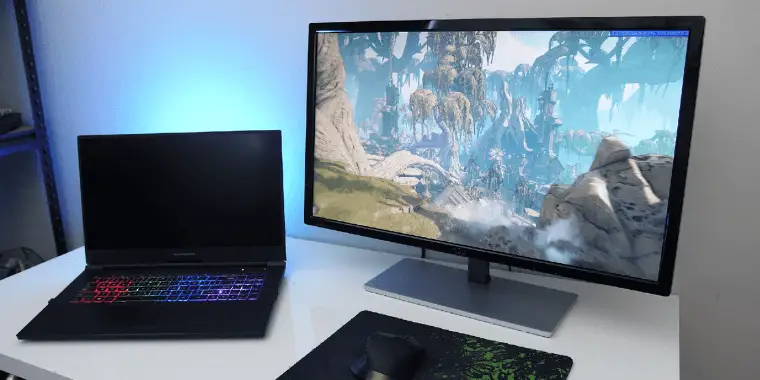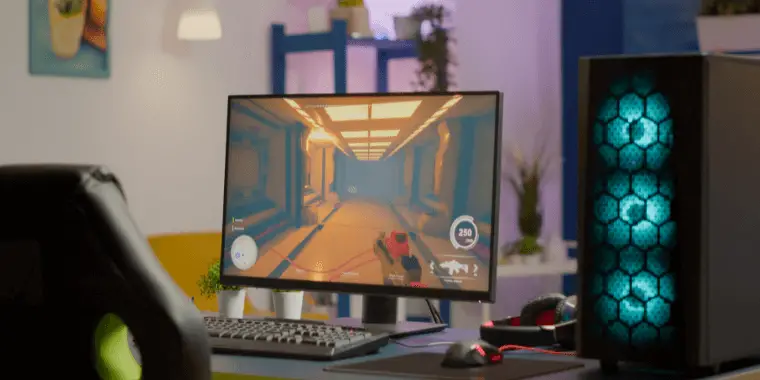
If you are a pro gamer, a gaming fanatic, or simply a computer enthusiast, you have probably heard the term “FPS.” In fact, you probably use FPS modes on your monitor on a daily basis.
However, if you aren’t sure what the term refers to, then you have come to the right place! This is a beginner’s guide that explains what is FPS mode on a monitor is. Read along to discover an interesting aspect of the gaming world!
A Closer Look into FPS in Monitors
First, it needs to be noted the term FPS has two meanings: it originally stood for frames per second; however, it also came to be used as shorthand for a first-person shooter, a popular type of game. Both meanings are implied when a monitor features an “FPS mode.”
When activated, FPS mode utilizes a higher number of frames per second, making it ideal and preferable for gamers since it prevents input lags. Such input lags are a function of having a low number of frames per second, and they are a common source of frustration for first-person shooter gamers.
Basically, FPS mode packs more frames into each second of video, resulting in smoother graphics.
Why is FPS So Popular Among Gamers?

There are many reasons why the FPS mode on a monitor is so well appreciated by millions of gamers. If you are new to the world of gaming and don’t understand the hype surrounding FPS mode, here are some of the main features that make it appealing to gamers.
• It limits distractions by turning off notifications during an ongoing video game.
• It improves your screen’s color saturation, contrasts, gamma, and brightness, all of which, in turn, elevate the gaming experience. It is easier to locate enemies, predators, or targets.
• Increased performance with respect to these visual components also improves games like PUBG or COD, since it allows you to cut through rendered fog or vignettes.
• FPS mode amplifies your refresh and response rate, which helps reduce input lag. When activated on gaming monitors, it results in the fastest response time!
• By continually correcting the display color, FPS delivers graphics that are naturally pleasing to your eyes while reducing eye strain and visual fatigue. You can say goodbye to headaches!
Why Is FPS Important?
If you have ever hung out with a competitive professional gamer, you have probably heard them refer to “frame rate,” and you may have wondered what it meant.
Essentially, the frame rate is the frequency at which images, or frames, appear or are displayed on your screen. When your monitor is on 15 FPS, for example, that means that you are viewing a succession of 15 different video stills in one single second.
While we are focusing on FPS as it relates to gaming and displays, it is also a measure that is used within film production and video camera specifications.
But why is it so important, and what is the value of knowing about frame rates?
First, knowing your monitors can help solve display problems encountered while gaming. If you experience a sluggish display, check your monitor’s FPS and high contrast settings, and compare it to the recommended FPS for the game. Bringing these into alignment will ensure you have a better gaming experience.
Second, knowing the FPS of the various monitors you are considering purchasing will help you make a decision. Determine how clearly or saturated you want the display in your preferred video games, and then compare that to the functionality of the monitors you are reviewing.
There’s no need to buy an expensive computer with a high FPS if you won’t be making use of it. If your graphics card itself can provide sufficient FPS, don’t waste money on a fancy monitor!
What FPS Is Right For Gamers?
Now that we’ve explained the basic concept and why people are concerned with it, you may be wondering which FPS is most appropriate for gamers.
To be honest, there is no right answer. There is no “best” frame rate because each FPS will result in different outcomes. You need to decide how, exactly, you want to view your games.

While 30 FPS is sufficient for most games, as technology advances and games become ever more sophisticated, you will find it difficult to enjoy games at this frame rate. There will be frequent lags and irregular color payoff or pigmentation.
In our opinion, 60 FPS is far superior. At this rate, you will be able to enjoy most of your games. Let’s consider a couple of reasons why.
First, the newest generations of XBOX, Series X, as well as the PlayStation 5 are using 60 FPS. By becoming accustomed to playing at this rate on your gaming monitor, you will find that it won’t be a big deal to adapt to the gaming experience provided by these consoles.
Second, gaming monitors with 60 FPS are the most accessible and widely available. The Samsung 27-Inch CR50 Frameless Curved Gaming Monitor and the ViewSonic VX2452MH Gaming Monitor are both great monitors, and they each utilize 60 FPS. We recommend that you check them out!
How Do You Choose the Best Frame Rate?
How you choose your preferred FPS depends on what quality game you play. However, here are some factors that you simply can’t overlook.
Realism
Using your monitor’s FPS mode adds realism to your gaming, which is what truly makes the experience enjoyable. Whether a character is performing in slow motion or fast motion, the frame rate should accommodate the graphic experience. If you select too low of a frame rate, the game will seem unnatural in most cases.
Here are a few common frame rates for a game mode, along with the conditions under which they are sufficient.
24 FPS: This is mostly used in TV shows, and it is the minimum requirement for realistic motions
30 FPS: Standard television nowadays uses this frame frequency. It is especially appropriate for sports channels to be able to view their motions at the correct speed.
60+ FPS: As mentioned above, most gaming monitors use this frame rate as it provides the greatest level of detail. Nowadays, due to technological advancement, many mobile phone cameras, such as the Samsung Galaxy S21 are also capable of recording videos with 60 FPS.
Motion
To choose the best FPS mode on your monitor, you have to be aware of the speed of motion in your games. If your games require a lot of movements, such as in racing games or other FPS games, naturally, select a monitor with high FPS to ensure the best performance.
Export Times and Internet Speed
This factor is pretty straightforward. A high-quality video or game that requires a high FPS thereby requires a greater number of images packed into a single second. This places demands on the amount of data that is processed and communicated over your internet connection. Exporting large files obviously takes more time than exporting relatively smaller files.
If you are a Youtuber or are active on online streaming websites, this factor is especially important for you because your high-quality, highly informative files will take longer to upload and export.
If you select high-FPS games and monitors, you will need to have access to a strong internet connection at all times. You might not be able to maximally utilize a high-FPS monitor if your internet connection is not amazing.
How Much FPS Is Too Much FPS?
Many argue that a racing mode that has 120 FPS is too much FPS. In reality, there are no real downsides to too much FPS, aside from the data load requirements. However, there are still some aspects you might want to take into consideration.
A higher FPS means that there are greater demands on the physical hardware that makes up your system. This means that it may run hotter than usual, which can pose a danger to you.
If your FPS is greater than your monitor’s refresh rate, you may notice screen tearings. Of course, you might not be able to see any real differences, but in that case, you will have wasted a lot of electricity and money.
Finally, 120 FPS will require extremely expensive hardware, such as a powerful GPU. You will also need a monitor that supports this framerate.
Frequently Asked Questions
No. It is applicable to any system that captures motion, such as film or video cameras. Also, in general, a good framerate will reduce eye strain for anyone using a monitor.
The old-school standard of 30 FPS is good enough for gamers.
A human eye can typically see around 30 to 60 FPS and sometimes a little more than 60 FPS.
Final Thoughts
We’ve surveyed all of the key factors that make FPS relevant for gamers. The advantages of using the FPS mode on your monitor are far greater than the minor inconveniences that doing so may cause. An improvement in color saturation and brightness combined with a decrease in lags and distractions will make your gaming experience exceptional.
While some problems arise when using extraordinarily high FPS settings, such as screen tearing, these are easily avoided by using the correct frame rate for your monitor.
We hope this article helps clarify what the FPS mode on a monitor is and assists you in choosing the perfect monitor. Thank you for reading along!